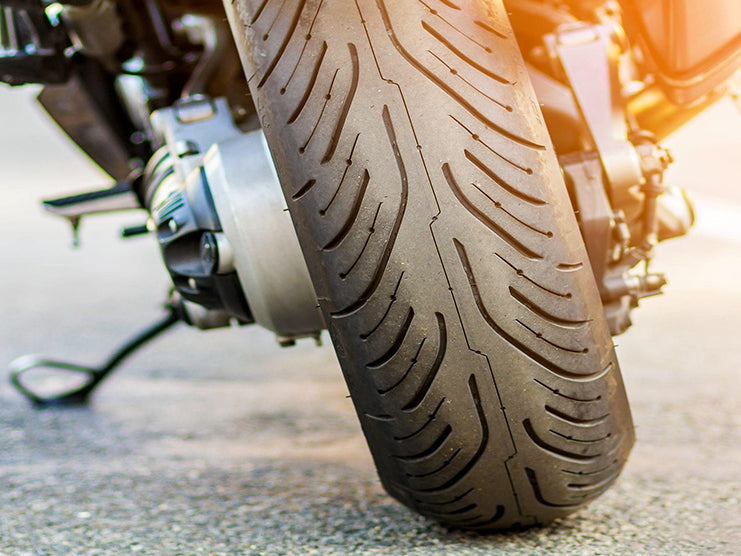Table of Content
“Always keep your motorcycle in good shape because motorcycle boots are not good for walking.”
The engine is considered to be the heart of a motorcycle and the most significant part that keeps the motorcycle running and functional. However, one cannot deny the significant role of motorcycle tires when it comes to handling, cornering, and stability. Motorcycle tires take the most load, wear and tear, and friction, and are the only motorcycle parts that stay in contact with the ground. The contact between motorcycle tires and ground becomes more aggressive when you are riding a motorcycle at high speeds or maneuvering it on challenging terrains, causing early wear and tear of motorcycle tires. Therefore, motorcycle tires must be replaced if they are old or damaged to ensure safety while riding. Read this article to learn how to tell the age of a motorcycle tire.
1. How to Tell the Age of a Motorcycle Tire
1.1 For Motorcycle Tires Manufactured After 2000
There is no rocket science involved in telling the age of a motorcycle tire. You can simply get to know the motorcycle tire’s age by reading the DOT (Department of Transportation) number engraved on it. Every motorcycle tire, no matter its brand, comes with a unique DOT number that tells the age of the tire.
To tell the age of a tire, follow the below steps:
- Locate the DOT number engraved on the tire.
- After locating it, you will see a group of numbers engraved, indicating the tire’s model number and the manufacturing date.
- The last group of numbers, having four digits, tells the age of the tire.
- The first two digits tell the week number of a particular year. For example, if the first two digits are 23, it means that the concerned tire is manufactured on the 23rd of a particular year. Not to forget, there are 52 weeks in a year.
- The last two digits on the motorcycle tire tell the year of manufacture. These are for tires that are manufactured after 2000. If the last two digits are 14, it means that the concerned tire was manufactured in 2014.

1.2 For Motorcycle Tires Manufactured Before 2000
- If your motorcycle tire was manufactured before 2000, the date code on the tire will have only three digits.
- In the same way, the first two digits indicate the week.
- The last single digit represents the year.

There was confusion with the date code on motorcycle tires manufactured before 2000 as you could not tell whether the number “9” represents 1999, 1989, or 1979. However, you can tell this by examining the condition of the motorcycle tire, including the wear and tear, cracks, and physical appearance.
2. Why is It Important to Determine the Age of the Motorcycle tire?
Motorcycle tires must be in good shape and condition as it determines the handling, cornering, and maneuverability characteristics of a motorcycle. If your motorcycle engine, suspension, and other performance parts are in good shape, but you are using old tires, your motorcycle will not be able to perform to its full potential. Riding a motorcycle with old and worn-out tires poses several safety risks to you and other people on the road.
3. What Happens to Motorcycle Tires When They Are Old?
Motorcycle tires are different from tires used in other vehicles. They have oil in them to ensure softness so they can change their shape while leaning. Motorcycles are expected to lean while turning a corner and are equipped with soft rubber tires. When motorcycle tires get old, the oil in them dries out due to evaporation. As a result, they become harder and cause instability and handling issues.
4. When Should You Replace Your Motorcycle Tires?
Most motorcycle tire manufacturers instruct riders to replace their motorcycle tires every five years if they use their motorcycles regularly. However, if motorcycle tires are well taken care of and are not used in harsh conditions, they can even last for 10 years.
To ensure safer rides, better maneuverability, stability, handling, and cornering performance, make sure your motorcycle tires are properly inflated and have no cracks and deformation.
Also Read: Tools You Need to Change a Motorcycle Tire
5. How to Indicate Wear on a Motorcycle Tire
5.1 TWI Indicator
To find out if the motorcycle tire has worn out, particularly its tread, and needs to be replaced, there is a TWI (Tread Wear Indicator) mark on the tire to identify the amount of wear. There is a small arrow-shaped indicator on top of the TWI mark. If it aligns with any of the tread patterns present on a motorcycle tire, it is time you should replace your tire.
5.2 Visual Inspection
Most of the issues with motorcycle tires can be identified through visual inspection. If your motorcycle tire is deformed and has squared off from the middle, it means that the tire has been overused and requires replacement.
If you find out that the tread pattern on your motorcycle tire has become uneven, your tires have expired and you must install new tires.
Also Read: How to Balance a Motorcycle Tire by Yourself
6. The Bottom Line
If you want to maximize your motorcycle’s performance and ensure better handling, stability, safety, and maneuverability, make sure your motorcycle tires are in good shape and condition. Riding a motorcycle with old and worn-out tires poses several threats to your safety. To maintain your motorcycle tires, learn how to find out the age of a motorcycle tire. Depending on their age and condition, make sure to replace them after every five years of use. If you are a beginner rider, you can also take your motorcycle to a professional mechanic so he/she can perform a thorough inspection of your motorcycle tire to tell whether it needs to be replaced.
Safety is the most important aspect of riding a motorcycle. Your motorcycle must have fit and properly inflated tires to avoid any inconvenience, especially if you love to go on long hauls and cross-country trips. To further improve your safety and comfort, Viking Bags offers a variety of motorcycle touring parts, including fairings, crash bars, sissy bars, backrests, handlebars, and comfortable seats and luggage-carrying options, including motorcycle trunk bags, tank bags, backpacks, and saddlebags.













Leave a comment
All comments are moderated before being published.
This site is protected by hCaptcha and the hCaptcha Privacy Policy and Terms of Service apply.